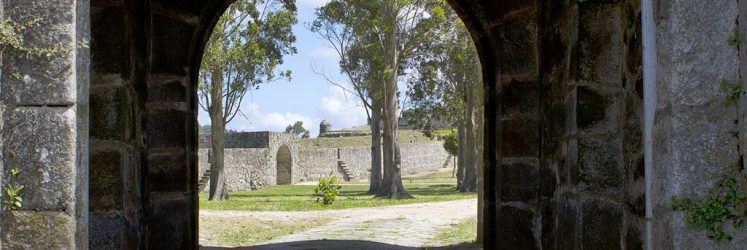The Castle of Santa Cruz is part of the strongholds and defence systems built in the last stretch of the Miño river during the Independence War between Spain and Portugal in the 17th century. The fortress, popularly known as “castle”, was erected around 1664, to speed up the construction, stones from the medieval wall that surrounded the town were taken. The plant is an irregular polygon, with four bastions standing out from the main wall. On these bastions are placed the bartizans well worked in stone. The access is through the Puerta de la Villa (Town Gate), which rises perpendicularly to Puerto Rico Street and the Socorro Gate which is accessed by a walk from Santo Domingo street. In the courtyard there was the chapel, the governor’s house, the headquarter for the troops, stables, warehouses, munitions dump, butchery, etc. those facilities were detailed on the preserved plans, though they weren’t kept physically.
Despite the resistance of the troops and neighbours under the command of the military Governor Jorge Madureira, the fortress was taken by the Portuguese army in November 1665 under the leadership of Conde de Prado. It was occupied until the end of the war in 1668. The French would take back the stronghold in 1809, but the occupation would last only a few months. With the 19th century confiscation, the fortress remains in private hands around 150 years until its recent recovery for public use.
Strolling through the walled various interpretive panels and several smartphone downloadable audio guides provide to insight into the fortress’ history in depth. Interpretation Center permits to understand this fortress within the frame of a much broader defensive system.
Opening Times for the public space:
- 10am – 6pm Nov, Dec, Jan & Feb
- 10am – 7pm Mar & Oct
- 10am – 9pm Apr, May & Sep
- 10am – 10pm Jun, Jul & Aug







